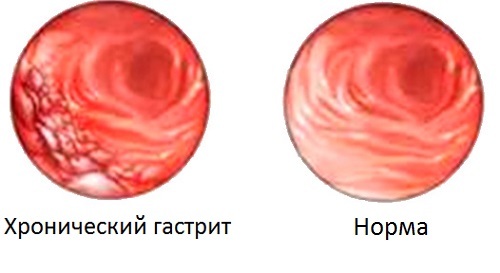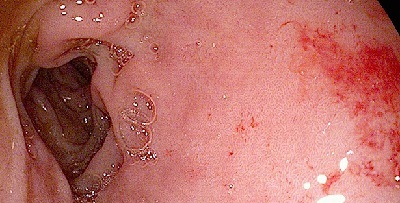Among all the causes of death from cancer, brain tumors take a leading position. Astrocytomas account for half of all neoplasms of the central nervous system. In men, these tumors are more common than in women. Malignant astrocytomas predominate in individuals aged 40 years and older. In children, mostly piloid astrocytomas are found.
Content
- 1Histological characteristics of astrocytes
- 2Risk factors
-
3Symptoms
- 3.1Primary symptoms of astrocytoma
- 3.2Secondary symptoms of astrocytoma
- 4Diagnostics
- 5Treatment
- 6Forecast
Histological characteristics of astrocytes
 Astrocytes are cells of the central nervous system that perform a restrictive, supporting function. It is from them that there is an astrocytoma.
Astrocytes are cells of the central nervous system that perform a restrictive, supporting function. It is from them that there is an astrocytoma.Astrocytomas are neuroepithelial brain tumors derived from astrocyte cells. Astrocytes are cells of the central nervous system, which perform a basic, restrictive function. There are 2 types of cells: protoplasmic and fibrous. Protoplasmic astrocytes are located in the gray matter of the brain, and fibrous - in white matter. They envelop capillaries and neurons, also participating in the transfer of substances between the blood vessels and nerve cells.
All CNS tumors are classified according to the international histological classification (the latest revision by the WHO specialists in 1993).
There are the following types of astrocyte neoplasms:
- Astrocytoma: fibrillar, protoplasmic, large-celled.
- Anaplastic malignant astrocytoma.
- Glyoblastoma: giant cell glioblastoma, gliocarcoma.
- Pilocitic astrocytoma.
- Pleomorphic xanthoastrositoma.
- Subependymal giant cell astrocytoma.
According to the nature of growth, the following species are distinguished by an astrocyte:
- Nodal growth: piloid astrocytoma, subependymary giant cell astrocytoma, pleomorphic xanthoastrocytoma.
Astrocytomas with nodal growth have clear boundaries, are limited from the surrounding brain tissue.
Piloid astrocytoma often affects the cerebellum, the visual crossover and the brain stem. Worn benign, malignant (become malignant) very rarely. In tumors, cysts are often found.
Subependymary giant cell astrocytoma is more often located in the ventricular system of the brain.
Pleomorphic xanthoastrositoma is rare, often in young people. It grows in the form of a node in the cortex of the large hemispheres, it can contain large cysts. Causes epileptic seizures.
- Diffusive growth: benign astrocytoma, anaplastic astrocytoma, glioblastoma. Diffuse astrocytomas belong to the 2nd degree of malignancy.
For astrocytomas with diffuse growth, there is a lack of clear boundaries with the brain tissues, they can sprout into the brain substance of both hemispheres of the large brain, reaching huge sizes.
Benign astrocytoma becomes malignant in 70% of cases.
Anaplastic astrocytoma is a malignant tumor.
Glyoblastoma is a high-grade tumor with rapid growth. It is more often localized in the temporal lobes.
Risk factors
Astrocytomas, like other tumors, are multifactorial diseases. Specific factors for the astrocyte are not isolated. The general risk factors include work with radioactive substances, hereditary predisposition, viral load on the body.
Symptoms
A distinctive feature of all neoplasms of the brain lies in the fact that they are located in the enclosed space of the cranium and therefore with time lead to damage as a number of underlying structures (focal symptomatology), and distant formations of the brain (secondary symptomatology).
Isolate focal (primary) symptoms of astrocytoma, which are caused by damage to the brain area tumor. Depending on the topical location of the tumor, the symptomatology with damage to various parts of the brain will differ and depend on the functional load of the affected area.
Primary symptoms of astrocytoma
- Frontal lobe.
Psychopathological symptomatology is the hallmark of the defeat of the frontal lobe: a person experiences a feeling of euphoria, his criticism to his disease (does not take it seriously or believes that he is healthy), may be emotional indifference, aggressiveness, complete destruction of the psyche. If the corpus callosum or the medial surface of the frontal lobe is damaged, memory and thinking are disturbed. If Broca's area is damaged in the frontal lobe of the dominant hemisphere, then motor problems occur (speech is slow, poor articulation of words, but individual syllables are pronounced well). The anterior parts of the frontal lobes are considered to be "functionally mute areas", therefore astrocytomas in these zones are manifested at later stages when secondary symptoms are attached. Defeat of the posterior parts (precentral gyrus) leads to the appearance of paresis (weakness of the muscles) and paralysis (lack of movements) in the arm and / or leg.
- The temporal lobe.
Astrocytomas of this localization cause hallucinations: auditory, taste, visual. These hallucinations eventually become an aura (harbingers) of generalized epileptic seizures. Patients complain about the "previously seen or heard" phenomenon. If the tumor is located in the temporal lobe of the dominant hemisphere, then there is sensory impairment of speech (a person does not understand oral and written speech, the patient's speech consists of a set of arbitrary words). There is such a symptom as auditory agnosia - it is not the recognition of sounds, voices, melodies that the person used to know. Most often, with astrocytoma of the temporal region, dislocation and wedging of the brain into the occipital foramen, which leads to a lethal outcome.
Epileptic seizures occur with astrocytomas in the temporal and frontal lobes more often than with other tumor localizations.
- There are focal motor attacks: consciousness is safe, there are convulsions in individual limbs, turns of the head.
- Sensory seizures: a sensation of tingling or "crawling" along the body, flashes of light - photopsy, objects change color or size.
- Vegetovisceral paroxysms: palpitation, unpleasant sensations in the body, nausea.
- Sometimes convulsions can begin in one part of the body and gradually spread, involving new areas (Jackson seizures).
- Complex partial seizures: the consciousness is broken, in which the sick person does not enter into dialogue, does not react on the surrounding, makes chewing movements, smacking lips, licking lips, repeating sounds, singing.
- Generalized seizures: loss of consciousness, turn of the head and the fall of a person, after that the arms and legs are stretched, the pupils dilate, involuntary urination is a tonic phase that is replaced by a clonic phase - muscle cramps, rolling of the eyes, hoarse breathing. In the clonic phase, a bite of the tongue takes place, a bloody foam appears. After a generalized attack, a person falls asleep more often.
- Absenses: a sudden loss of consciousness for a few seconds, a person "freezes", then consciousness returns and he continues to work.
- The dark share.
Defeat of the parietal lobe is clinically manifested by sensitive disorders, asteroognosis (a person can not to feel the subject, can not name parts of the body, closed eyes), apraxia in the opposite hand. Apraxia is a violation of purposeful actions (a person can not fasten buttons, put on a shirt). Characteristic focal epileptic seizures. If the lower divisions of the left parietal lobe are damaged, right-handers are disturbed by speech, writing, counting.
- Occipital lobe.
In the occipital lobe, astrocytomas are least likely to occur. Are manifested by visual hallucinations, photopsy, hemianopsia (half the field of vision of each of the eyes falls out).
Secondary symptoms of astrocytoma
 One of the symptoms of astrocytoma is a paroxysmal or aching character with a diffuse headache.
One of the symptoms of astrocytoma is a paroxysmal or aching character with a diffuse headache.- Headache.
The manifestation of astrocytomas often begins with headaches or epileptic seizures. Headache is diffuse without clear localization and is associated with intracranial hypertension. At the initial stages of growth, astrocytomas can be paroxysmal, aching. As the tumor progresses and the surrounding tissues become compressed, the brain becomes permanent. Occurs when the position of the body changes. Suspicion of a neoplasm should occur if the headache is most pronounced in the morning and decreases during the day, and if the headache is accompanied by vomiting.
- Intracranial hypertension and cerebral edema.
Tumor, squeezing the cerebrospinal fluid, venous vessels, leads to an increase in intracranial pressure. It manifests itself as headaches, vomiting, persistent hiccough, decreased cognitive functions (memory, attention, thinking), decreased visual acuity (up to loss). In severe cases, a person falls into a coma. The fastest intracranial hypertension and cerebral edema occur with astrocytomas in the frontal lobe.
Diagnostics
- Neurological examination.
- Non-invasive methods of neuroimaging (CT, MRI).
They allow you to identify the tumor, accurately indicate its location, the size, the relationship with the tissue of the brain, the effect on healthy structures of the central nervous system.
- Positron Emission Tomography (PET).
Radiopharmaceutical is introduced, and the degree of malignancy is established by its accumulation and metabolism.
- Investigation of biopsy material.
The most accurate method of diagnosing astrocytomas.
Treatment
- Dynamic observation.
- Surgical methods of treatment.
- Chemotherapy.
- Radiation therapy.
When asymptomatic astrocytomas are detected in functionally important areas of the brain and with their slow growth, it is advisable observation in the dynamics, because with their surgical removal the consequences are much worse. When the clinical picture is expanded, the tactics of treatment depend on the location of the astrocytoma, the presence of risk factors (age over 40 years, a tumor more than 5 cm, the severity of focal symptoms, the degree of intracranial hypertension). Surgical treatment is aimed at the maximum removal of astrocytomas. Chemotherapy and radiotherapy are prescribed only after the diagnosis is confirmed by histological examination of the tumor (biopsy). Each type of therapy can be used alone or as part of a combination treatment.
Forecast
With nodal forms after their surgical removal, the onset of prolonged remission (more than 10 years) is possible. Diffuse astrocytomas give frequent relapses, even after combined therapy. Life expectancy averages 1 year with glioblastomas, with anaplastic astrocytomas up to 5 years. Duration of life with other astrocytomas for many years. Patients return to work, a full life.
In the program "Live healthy!" With Elena Malysheva talk about astrocytoma (see. from 3: 5 min.):

Watch this video on YouTube



